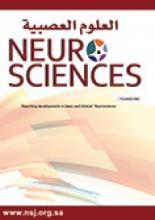Article Figures & Data
Tables
Variables n (%) Age in years (range) 37.6±11.5 (18-62) Duration of injury in years (range) 10.6±6.2 (1-20) Gender Female 14 (23) Male 47 (77) Marital status Single 25 (41) Married 36 (59) Level of injury Paraplegic 46 (75) Tetraplegic 15 (25) Cause of injury Car accident 40 (65.5) Falling 9 (14.7) Gunshot injury 8 (13.3) Others 4 (6.5) Education level High school 9 (14.8) Diploma 18 (29.5) University 34 (55.7) Occupation Unemployed 24 (39.4) Employed 20 (32.8) Retired 6 (9.8) Student 3 (4.9) Unanswered 8 (13.1) Perceived educational needs Perspective Personal educational needs Personal independence and transportation “..I need knowing about hydrotherapy because it helps me to prevent pressure ulcer, and spasticity.” (A 36-year-old bachelorette man with complete paraplegia). Financial independence “…I wonder to know how to prevent my muscular atrophy”(A 36-year-old female with complete paraplegia). Life skills modifications “… I really need to know how to have an enjoyable sex….”(A25-year-old graduated man with incomplete tetraplegia). Prevention of SCI complications “… I am so interested to be trained in art or music to have an independent financial life… “(A 30-year-old graduated man with incomplete paraplegia). Knowledge about SCI “… I wonder if I can learn computing and information technology (IT), to facility my life style more (a 45-year-old bachelorette man with incomplete paraplegia). Relationships and Sexual function “.. Well I really need to know about how can be adjusting on transportation vehicles such as wheelchair …”(A 30- year-old bachelorette woman with complete tetraplegia). Psychological adjustment “…I am interested in knowing about how SCI effect on reproductive organs and digestive system…”(A 45-year-old bachelorette man with incomplete paraplegia). “…I think it is very important to know about how I can accept my current state…” (A 33 year old graduated man with complete paraplegia). Family educational needs Caregiver skills and communication “…I truly need my family to understand my distraught and respect my mental privacy and independence…” (A 30-year-old post graduate women with complete paraplegia). First Aid and Emergency skills “…I believed that family and caretakers need to receive proper briefings and training even prior to us…” (A 29-year old associated degree man with complete paraplegia) Emotional and psychological support “… even though my family are very cooperative and have learned a lot in the past decade there are still many ways to ease the tasks…” (A 30-year-old graduate women with incomplete tetraplegia). Societal educational needs Social integration “…I stated that the society should learn to embrace a person with SCI without discrimination and bias, and most importantly provide a convenient social environment where those with SCI and disabilities can continue their education and enter the job market…”(An 18-year-old graduate man with complete paraplegia). Interpersonal communication skills “…Member of the society must learn about social dignity and cease pitying or staring at parson with SCI in an unpleasant way…”(A 42-year-old man with Primary education and complete paraplegia). SCI awareness and injury prevention “…general public are truly unaware of the significance of the nervous system, how it operates, and how the possible injuries can be prevented…”(a retired 53-year-old associate degree man with incomplete paraplegia). Sympathize while avoiding pity “…the society should have a more realistic understanding of the shortcomings that a spinal cord injured person struggles with, particularly about marriage and sex-life…” (A 36-year-old woman with incomplete paraplegia). SCI - spinal cord injury






